Additional notes (click to expand)
Medicinal
Source of glycosides used since 1785 to treat heart rhythm abnormalites.
Wink, Michael & Ben-Erik van Wyk (2008). Mind-Altering and Poisonous Plants of the World. Timber Press
Until the 1960s digoxin was still extracted from foxglove plants but now it is synthesised. The pure compound is much more consistent and reliable than the previous plant extracts. One advantage of the plant extracts is that they did not frequently cause intoxication because they induced nausea and vomiting within minutes of ingestion, preventing the patient from consuming more.
DeSwiet, Michael. (2012). Foxglove Digitalis Purpurea.
link
Contains digoxin which is used to treat cardiac failure and atrial fibrillation. Excess causes vomiting and xanthopsia. Leaves first investigated for ‘dropsy’ (heart failure) by Dr William Withering (1741-1799) See the excellent facsimile and commentary by J K Aronson. Withering noted that a woman with terminal heart failure was cured of her 'dropsy' by a mixture of 20 different herbs administered by a Shropshire lady herbalist. The only ingredient which he had not used was foxglove - regarded as too toxic for use at that time. He experimented for a dozen years on his charity patients and published his findings in 1785. However Charles Darwin (uncle to the famous author of The Origin of Species) had, in collaboration with Withering, used foxglove on one of his patients. After Charles Darwin's untimely death his father, Erasmus Darwin (grandfather to the author), published a paper recounting the use of foxglove in heart failure, just prior to Withering's publication. Withering's work was the beginning of the clinical method of trial and observation in the scientific assessment of the use and effect of plant based medicine.
Aronson, J.K.(1985) An Account of the Foxglove and its Medical usewith fascimile of William Withering. OUP.
Prescription only medicine: digoxin
Foxglove leaves, flowers and seeds contain the drugs digoxin and digitoxin which increase the strength of the failing heart and slow the heart when it is beating rapidly and irregularly in a condition called atrial fibrillation.
Digitalis purpurea Digitalis. Digitalis purpurea, the Purple Foxglove, has been central in understanding how to use drugs to treat diseases as well as being the first successful treatment for the failing heart. In 1785 William Withering, a Fellow of this College, described use of dried leaves of the Purple Foxglove to treat dropsy, an illness in which water accumulates in the body because of inadequate pumping action of the heart. He showed that the dose had to be adjusted to suit each patient to avoid toxicity. Over the next 150 years doctors learnt how to standardise tablets of the dried leaf, called Digitalis, and which patients would benefit from their use. In 1930 Sidney Smith discovered digoxin in D lanata, the Woolly Foxglove. As a pure chemical with the same actions it was simpler to manufacture and easier to control so it replaced the dried leaf in medical practice. The active substances in D purpurea and D lanata are called cardiac glycosides because they contain sugars and other molecules. D lanata contains another compound, Lanatoside C, with similar actions. They are still used today for certain types of heart disease.
William Harvey and plant derived medicines currently used in cardiovascular medicine, Prof Michael de Swiet's Notes 2018
Other use
Notes by Henry Oakeley from Lindley's 'Flora Medica' (1838):
We grow this plant under the plane trees at the front of the College, where it flowers in August. It is interesting to see what Lindley knew about plants that are still used as medicines, such as Digoxin which is extracted from the leaves of Digitalis. He writes ‘The leaves and seeds of this plant, especially the former, in the state of powder, tincture or infusion, afford one of the most valuable of known medicines, for the purpose of reducing the action of the heart [it slows the heart rate], promoting the action of absorbents, as a diuretic [the increased cardiac output causes increased renal blood flow and hence urinary output], and for producing a specific action over the cerebro-spinal system. It is employed very extensively in fevers, dropsy [oedema of the legs], inflammation, haemorrhages, diseases of the heart, and in mania, epilepsy, spasmodic asthma and the like. It is very remarkable for its power on the system, sometimes accumulating until it suddenly shows itself with irresistible force, to the imminent risk to the life of the patient.’
Lindley, John. (1838). Flora Medica, Longman, Orme, Brown, Green & Longmans
Phytochemistry
Active princile: all parts: several cardenolides (purpurea glycoside, lanatoside, digitoxin, digoxin).
Wink, M. (2009). Mode of Action and toxicology of plant toxins and poisonous plants. Mitt. Julius Kuhn-Inst. 421:93-111. page 99
Toxicity
Class 1a. Extremely hazardous: cardiac glycosides inhibit Na+,K+-ATPase, typical cardiac glycoside
intoxication, vomiting, diarrhoea, gastroenteritis, severe headache, irregular heartbeat and pulse,
convulsions, CNS disturbance, cardiac arrest, sudden death.
Wink, M. (2009). Mode of Action and toxicology of plant toxins and poisonous plants. Mitt. Julius Kuhn-Inst. 421:93-111. p.99
The cardiac effects and the phenomenon of it accumulating to toxic levels, because of its long half-life in the body, are all recognised today. The combination of a slow pulse, anorexia, confusion, delirium, hallucinations and xanthopsia (the curious phenomenon where everything appears to have a yellow colour) are the classical symptoms of overdose. Dr William Withering (1741-1799) wrote his An account of the foxglove, and its medicinal uses in 1785, which made its cardiac effects more widely known. Doctors of this era were unable to distinguish fluid accumulation due to renal from those of cardiac failure, and similarly had only vague concepts of ‘insanity’ and the distinction between mania and confusional states. Withering describes curing a man ‘in a state of furious insanity’, that was clearly secondary to cardiac failure, by the administration of digitalis. This led to it being recommended for all forms of nervous system illnesses – especially mania where a rapid heart rate is often recorded. Note by Henry Oakeley
Aronson, J.K.(1985) An Account of the Foxglove and its Medical usewith fascimile of William Withering. OUP.
Toxic due to cardiac glycosides that may derange cardiac rhythm and gastro-intestinal upsets.
Professor Anthony Dayan, 2022
Geographical distribution
- Africa, Northern Africa, Morocco
- Europe, Middle Europe, Belgium
- Europe, Middle Europe, Czech Republic
- Europe, Middle Europe, Germany
- Europe, Northern Europe, Denmark
- Europe, Northern Europe, Finland
- Europe, Northern Europe, Great Britain
- Europe, Northern Europe, Ireland
- Europe, Northern Europe, Norway
- Europe, Northern Europe, Sweden
- Europe, Southeastern Europe, Italy
- Europe, Southwestern Europe, France
- Europe, Southwestern Europe, Portugal
- Europe, Southwestern Europe, Spain
Podcast
Digitalis purpurea L.
Family: PLANTAGINACEAEGenus: Digitalis
Species: purpurea L.
Common names: Common foxglove
Distribution summary: N.Africa, Europe
Habit: Biennial
Hardiness: H5 - Hardy; cold winter
Habitat: Lowland, open woodland, grassland, scrub and verges
Garden status: Currently grown
Garden location: Poisons garden (PETO), Europe & Mediterranean (E), Plants of the World (C), Horseshoe parterre by William Harvey house (G)
Flowering months: June
Reason for growing: Medicinal, toxic, prescription only medicine
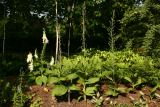

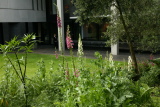
.JPG)
.JPG)
.JPG)
.JPG)


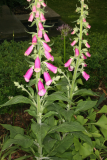
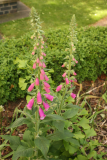
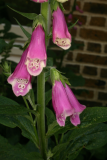


.JPG)
.JPG)
.JPG)
.JPG)











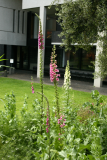
.JPG)
.JPG)
.JPG)
.JPG)
.JPG)